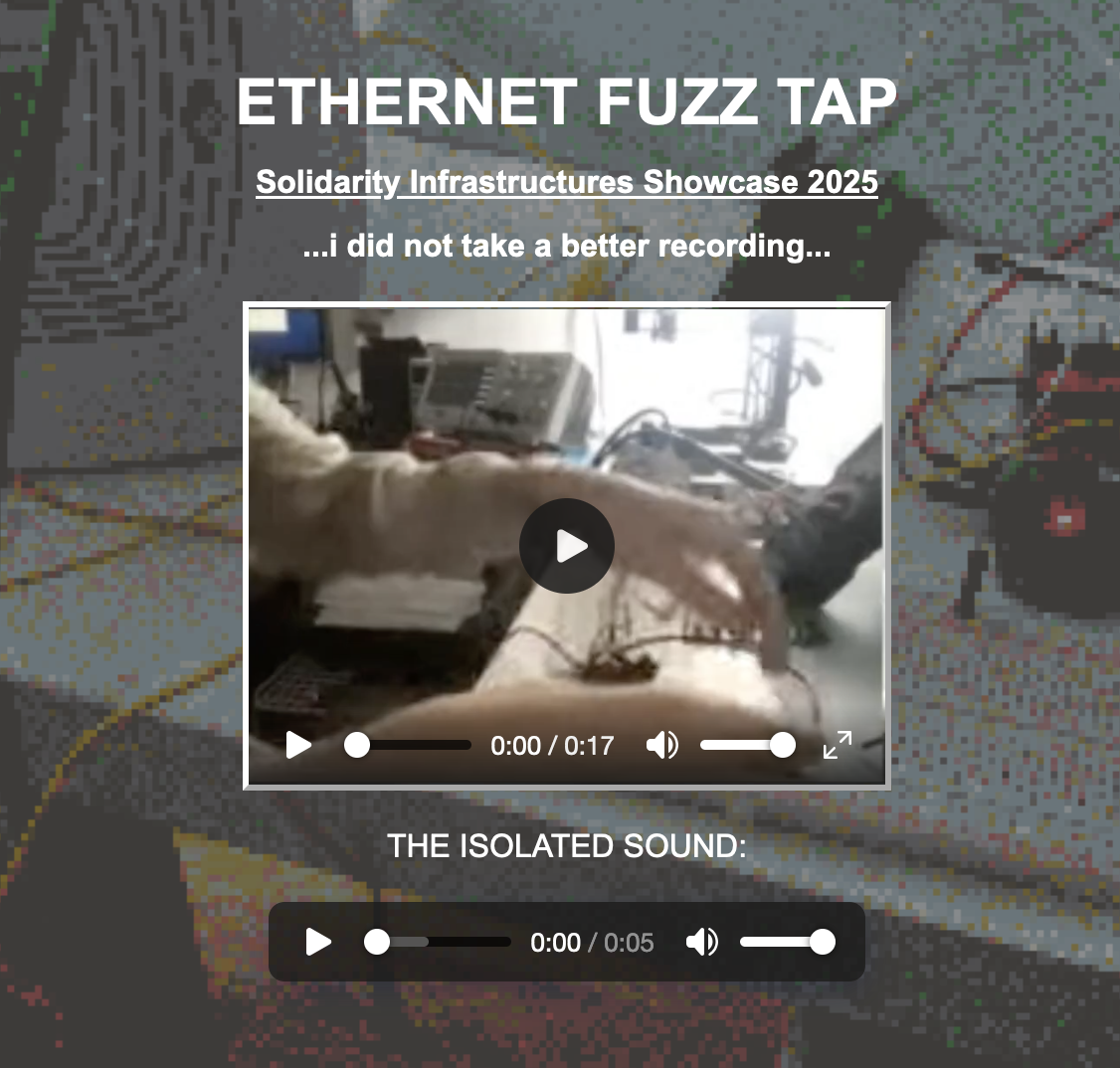Internet Synthesizer and Linux Club
Cookie Brunel
cookiebrunel.mayfirst.info
@donarrg.refl
I am an artist and technician at a couple makerspaces at the University of Toronto. Interested in degrowth, degoogling, and electricity.

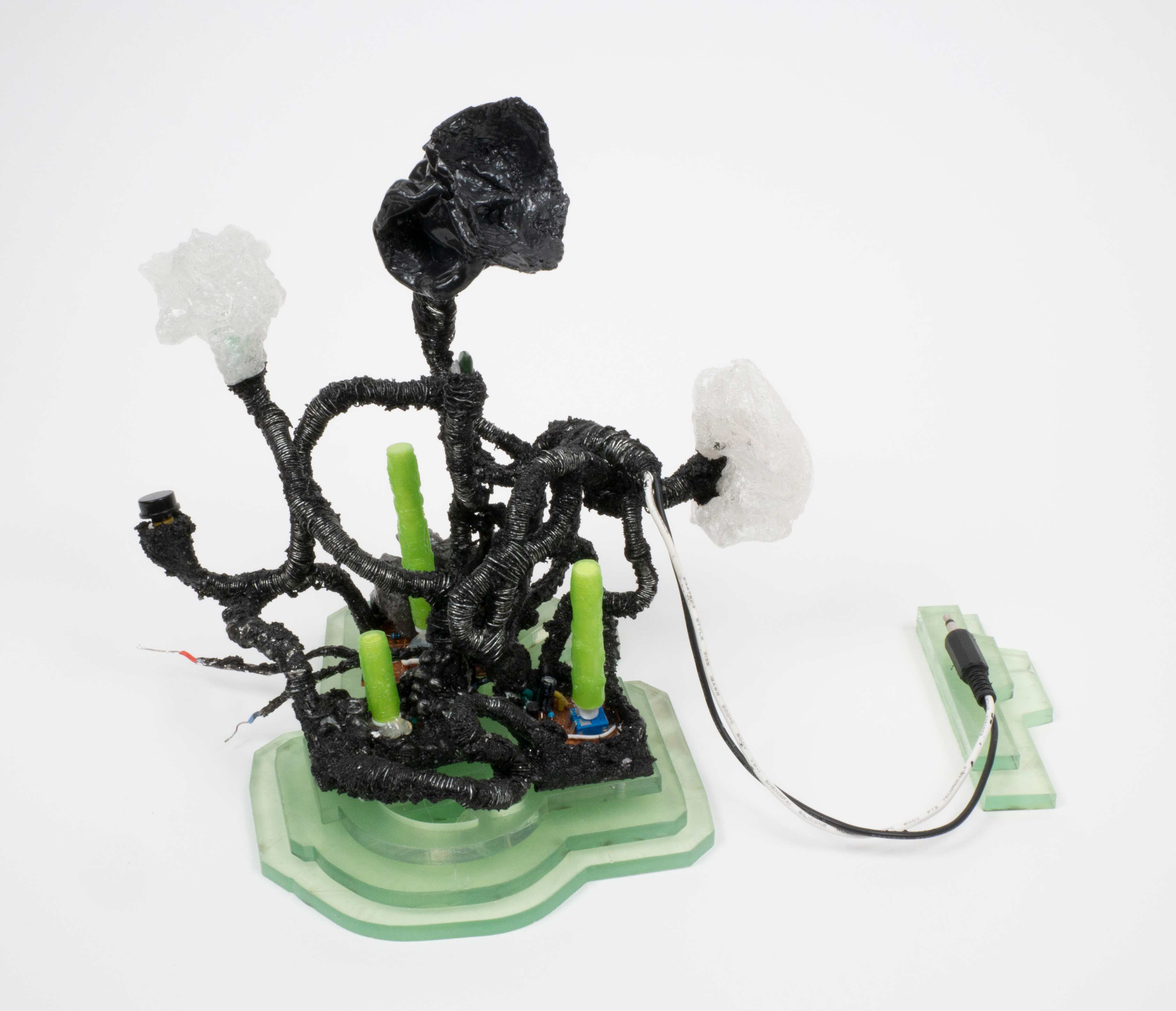
Blog Entry #1: Brainstorming 2 Project Ideas
-
Network Noise Explore (synthesizer made from servers, the sound of data transfer)
Jump to Entry #7 to see the final results
I'm imagining converting electrical signals of network communication to analog sound. I want to explore how files might be interfered with, degraded, or manipulated in transport over a network to create new sounds. Need to somehow down convert the high frequencies in physical ways (I'm not interested in programming and software for this, conceptully I'm interested in the physics of electricity and sound).
In terms of community involvement, I wondered if the output sound could be interactive through hacking (teaching these skills, incorporating education into performance) or some other type of common input (typing on a website? sending an email, idk yet). As of right now the idea is more in the realm of performance or interactive artwork. I will take an intuitive, bodily approach to exploring materials of the servers (digital and physical) with larger conceptual goals emerging as I explore. -
DeAppling/DeGoogling Resource
Jump to Entry #6 to see the final results
I want to start a club/support group for artists switching to Linux and could make some sort of resource for this, or even just learn about self hosting personal file storage to skillshare with artists looking to get off of google drive, icloud etc. Once I have the technical knowledge I'll consider more conceptual elements to develop this into a social practice art project -
Bonus Interest: Incorporating off-grid/sustainably/DIY(DIWO) energy sources
Entry #2: Linux Club - Anti-Surveillance Server?
Learned recently that there used to be a Linux Cafe in Toronto and got inspired by this. Originally I had been wanting to organize the linux club very casually just with a few friends in person. We have all been too busy/tired and I’ve also talked to a lot of new people that are interested. Rethinking my approach. New idea is to propose a monthly drop-in night somewhere (InterAccess? Wenona basement? Danu Social Club?) that would be open to the public and see how that goes. Could have a live stream going with projection for people to join online. Wondering how the self-hosted server could fit in here, maybe even just a promotional website to start. I’d like to somehow include aspects of anti-surveillance in the promotion/group communications, and for the overall concept if this is social art practice.
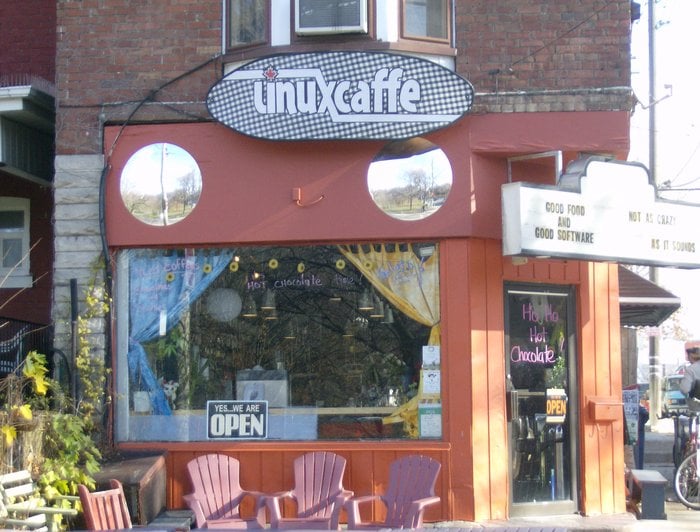
Entry #3: Noise Archive
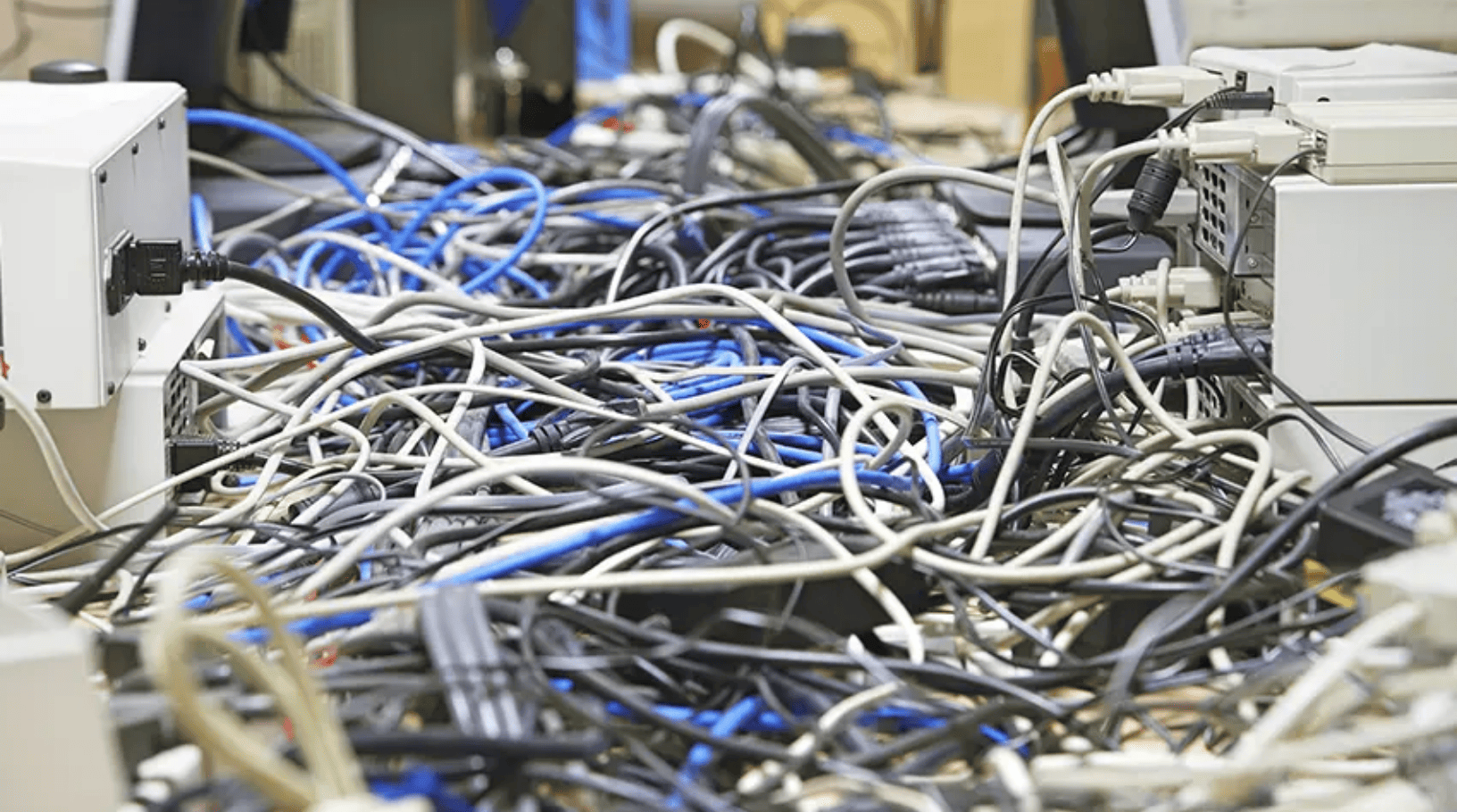 I collected some ideas for creating noise in the server synth. Noise makers are in bold.
I collected some ideas for creating noise in the server synth. Noise makers are in bold.
Noise (unwanted signal) from transmission mediums (wires are the transmission medium that what i will focus on): Noise is when the transmission is not perfect: the signal that is received is not what is sent
Noise types: Thermal, Induced, Crosstalk, Impulse
1. Thermal- could heat up a wire
2. Induced - magnetic (ac power cables) and electrostatic fields by another circuit (fluorescent lights) - could have AC cords with varying voltage input?? perform near power generator or site-specific heavy machinery??
- reduced by twisted cables, proper grounding, and shielding cables
- could live twist or unshield wires/objects?
3. Crosstalk - signal in one wire affects the signal in the other wire, one wire acts as a sending antenna and the other as a receiving antenna
- fix: twisted pair cable, shielded cable and increased distance
- 1. move things closer together? 2. if any part of the shielding is damaged, or if the wires aren’t perfectly grounded on either side of the connection, the shielding can act as an antenna and introduce additional electromagnetic noise from stray radio waves and Wi-Fi signals in the air
4. Impulse: a spike from power lines or lightning- receiving equipment misinterprets the signal
- somehow increase voltage idk
Other noise sources to investigate further:
Obsolete or worst quality ethernet cables: lower bandwidth increases latency? Any other effects?
Artefacts - perfect square waves require unlimited bandwidth? They have rounded corners
Jitter?- variations in amplitude and frequency?- changes when voltage change is detected
Packet switching: VOIP (packet switching not as stable as circuit for phone calls)
bandwidth changes which could result in higher latency
Analog data?- an analog signal is more prone to transmission errors because any slight distortion will change what the other end interprets entirely
More speculative ideas?:
-
max length of 2 cable segments is 328 feet (excess - degrade sound with too much length)
-
2 cables can accommodate a max of 1024 nodes per segment - (excess - is it possible to overload with too many nodes)
Entry #4: Thermoelectric Server
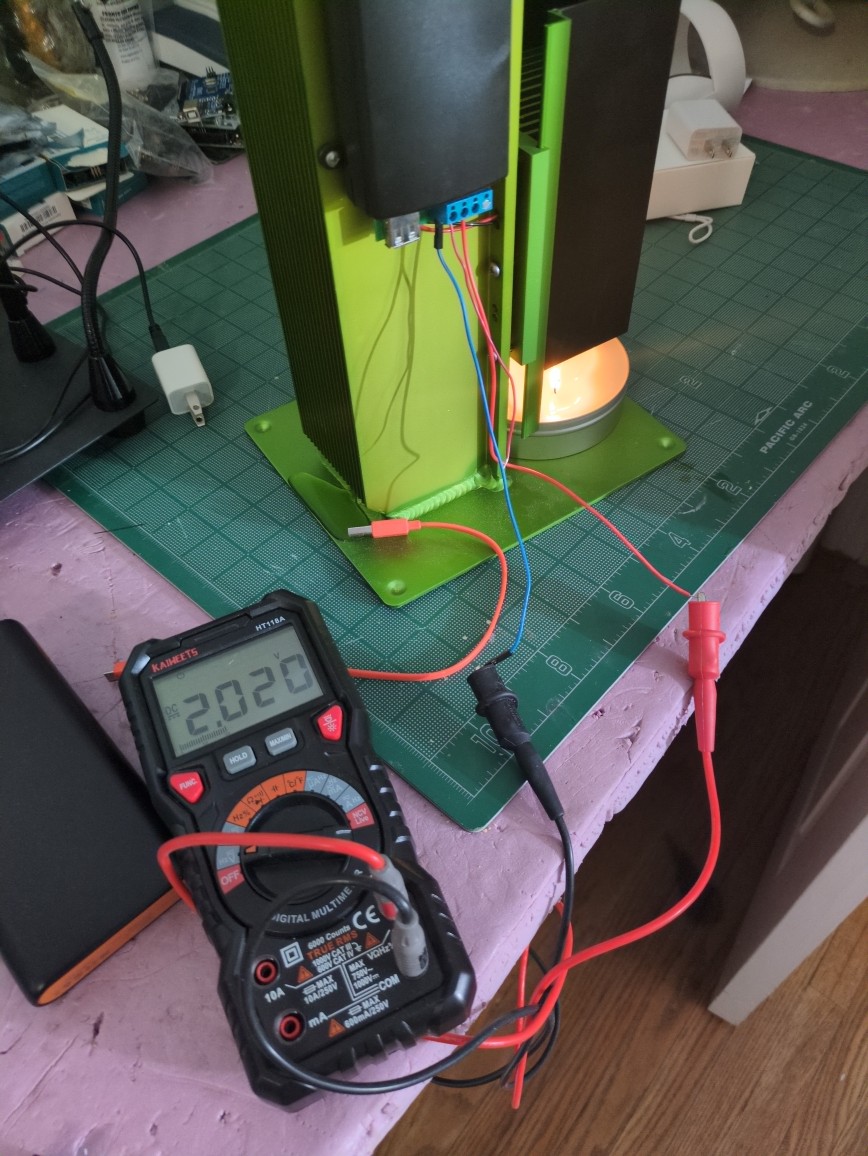
Reading through the permaculture technical wiki and came across this page about "design for descent". I've been interested in off grid power supplies for a while, exploring a bit of solar and wind power. This theremoelectric power generator is called an “Ipowertower” (uses water and heat to make electricity) and it has a 5v USB output. Since raspberry pi’s only need 5.1 volts to run I thought I would see if I could get my server running on it. After testing it with a candle, the tower does work however the voltage only reached 2.6 volts so I need to get a hotter heat source or figure out if i can configure the second output terminal differently.
Entry #5: Wire Tap for Server Synth and Coversion to Speaker Output
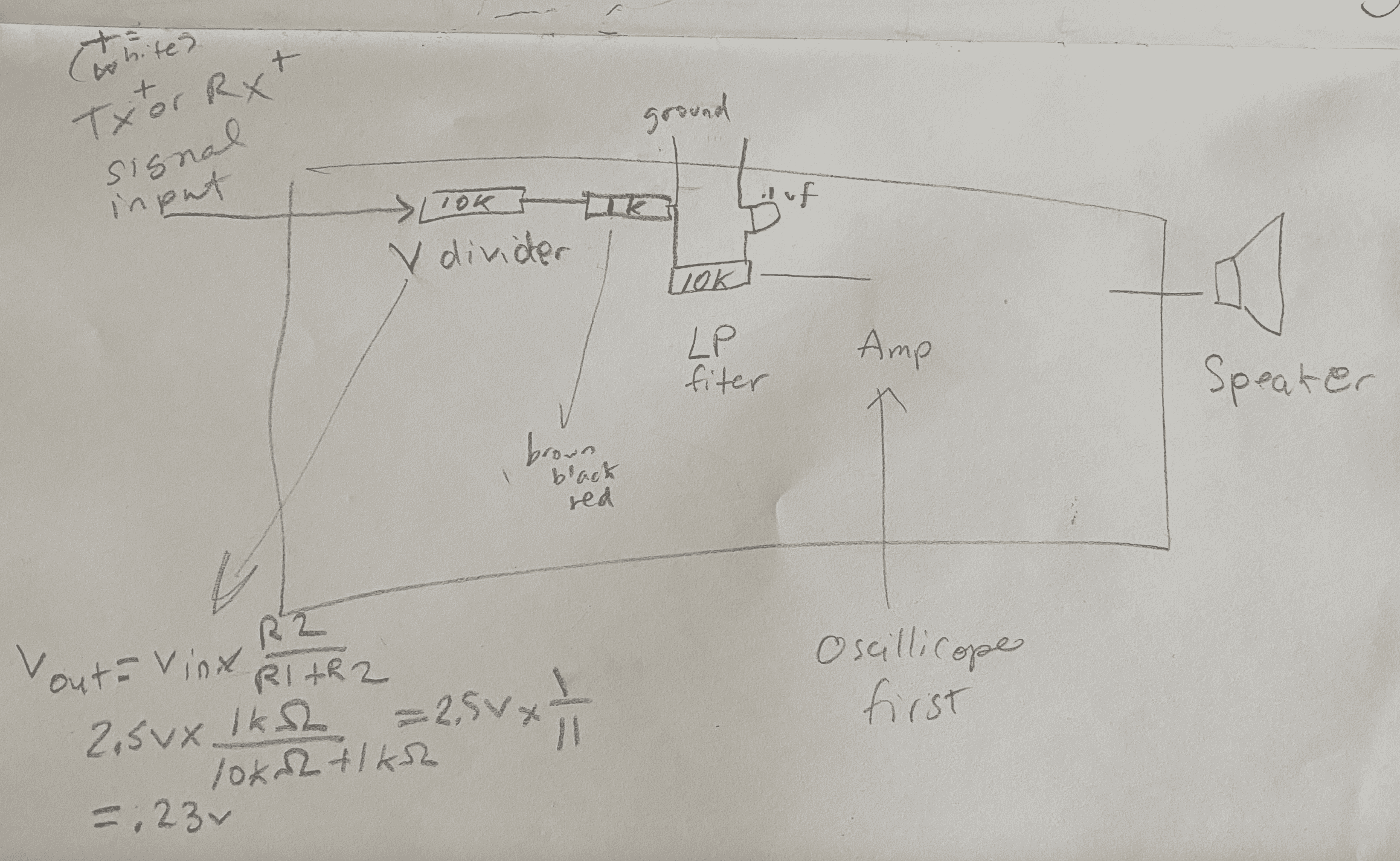 To Do:
To Do:
-
“wire tap” an ethernet cable: connect TX (transfer: Pins 1 (white/orange) and 2 (orange)) and RX (receive: Pins 3 (white/green) and 6 (green)) to following circuit:
-
attenuate the data transfer signals - Make a voltage regulator circuit
-
Ethernet signals can carry up to 2.5V, which is too high for audio equipment. Use a voltage divider to reduce the voltage to a safe level (e.g., 1V peak-to-peak).
-
-
Make a low-pass filter to isolate lower-frequency components that fall within the audible range.- will try a simple resistor/capacitor circuit which i have made for a drone synth before
-
Ethernet signals are high-frequency digital signals (10/100 Mbps operates at frequencies up to 125 MHz). note: i got a cat5 ethernet cable with max speeds of 50-100 Mbps
-
Audio systems typically handle frequencies in the range of 20 Hz to 20 kHz, which is much lower than Ethernet signals
-
-
Make an amp circuit to boost the signal for playback through a speaker
Entry #6: Linux Club Contact Storage - DeGoogled Forms with Nextcloud App
For our class showcase, I self-hosted a sign-up sheet (using Lichen-Markdown and Nextcloud Forms) on my RP3 server (running Yunohost) for the future Linux club: https://signup.linux.cookiebrunel.com/
*you may get a security warning: click Advanced>Proceed*
UPDATE: I became a May First member after the class and am in the process of switching my website to their servers so this website may temporarily not work
*Spoiler, the links do work, i was having technical difficulties when i made this and just went with it....
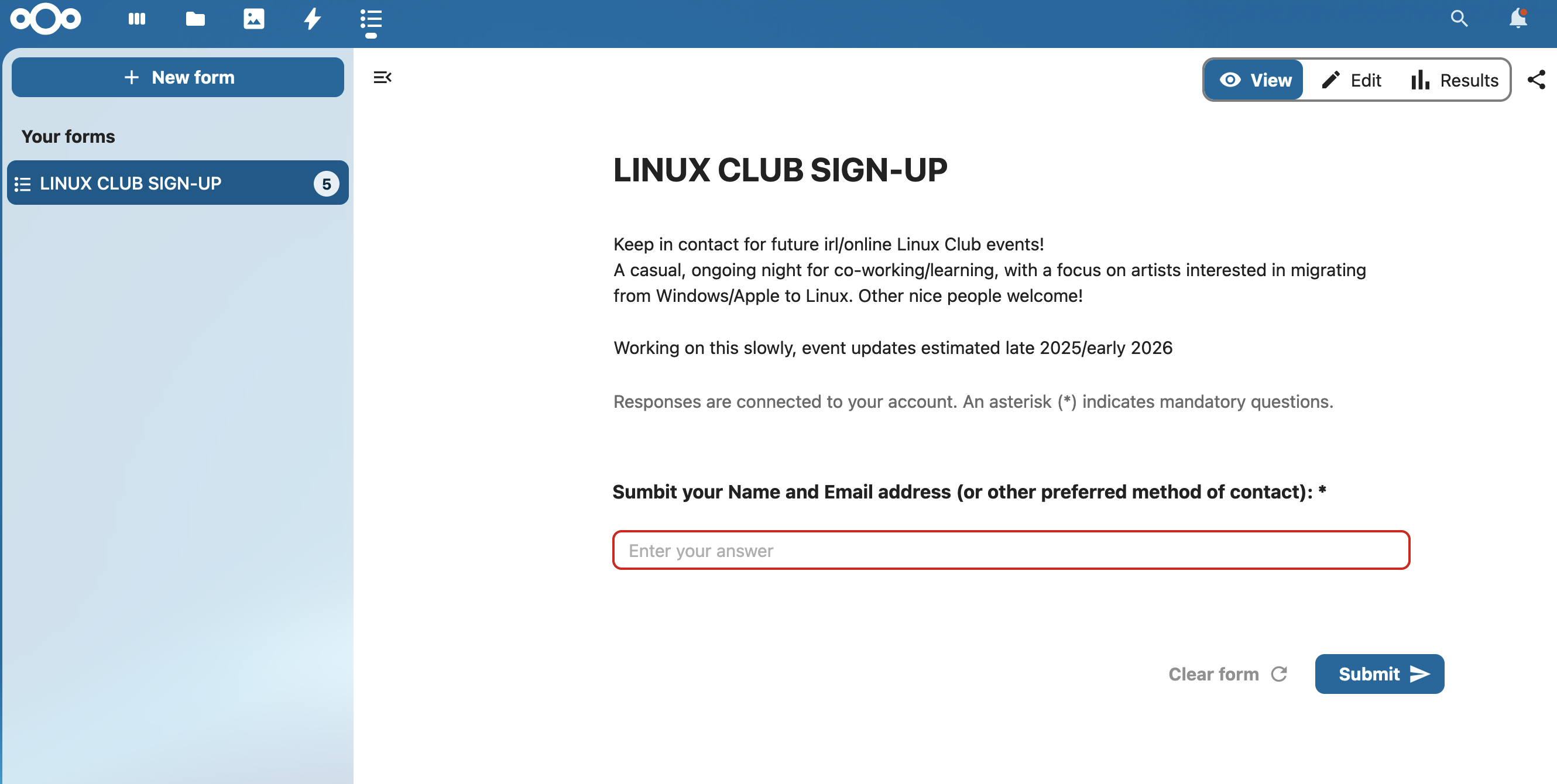
Conclusions: These websites were jokey technical exercises for the future Linux Club, that I would remake eventually, but I am happy that I learned some methods to replace google drive and forms with Nextcloud and Yunohost.
Post-Class Update: I used my May First membership with Nextcloud storage to DeApple and I am off of icloud too now! :)
Entry #7: Server Synth Circuit and Conclusions
I got scared I would blow up my daily equipment making this so I made a separate RP3 network with an old router. This modular setup could be useful to me if this turns into a performance.
2 RP’s: one with Yunohost (server) and one with RP OS (client). Idea is they could transfer data to each other through ethernet cables that I wire tap (and then convert that voltage to sound).

And here is my ethernet tap with a circuit attached to divide the voltage and filter out high frequencies! I connected that circuit to an amp module/speaker.

The resulting sound was static which is not very fun for a noise machine. I had hoped that there would be more dynamic noises when transferring data but the static did not change due to the high speeds of the frequencies, and my attempt to solve this issue with filters did not work. But...
HERE IS THE SOUND of the tapped ethernet signal!
(click the link not the pic)
